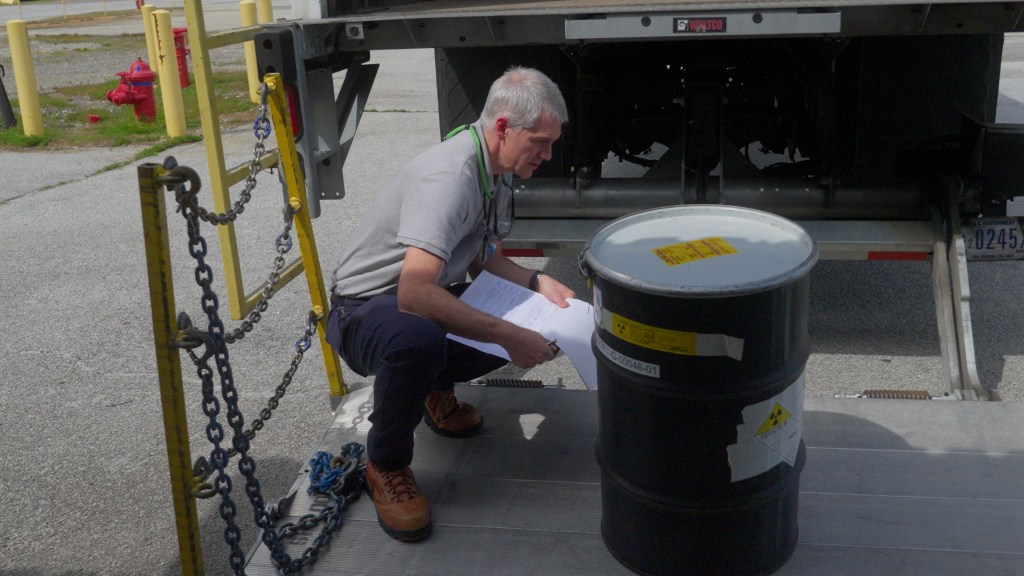SRNL Finds Beneficial Uses for Excess Nuclear Material
With the wide variety of legacy nuclear materials across the Department of Energy (DOE) complex, it’s critical to keep a detailed inventory on the type and location of these materials. Though inventories are maintained regularly, at the end of each fiscal year an in-depth inventory assessment is performed that accounts for the specific characteristics of materials, what organization is responsible for them, and what are the disposition pathways for the materials. A recurring issue found in the inventory assessments is the number of materials categorized as having a “to be determined” (TBD) disposition pathway.
The National Nuclear Security Administration’s Nuclear Materials Integration Division chartered Savannah River National Laboratory in 2018 to lead a project seeking a solution for disposition challenges arising from the diverse nuclear material inventories across the DOE complex. Findings from the project led to work culminating in a 2020 report that assessed specific DOE material inventories at each site to create a complex wide view of the major groups of materials and the potential available disposition options for these TBD materials.
The SRNL team continues to provide program leadership to address these disposition challenges and the team developed a robust ranking system in 2023 that evaluated the options for disposition of each TBD material group. Researchers leveraged existing research plans to utilize the work of the past for potential processing options. The next step was to determine viability of these options, taking things like cost, schedule and regulatory requirements into consideration via weighting factors to compare options and provide a ranking. These rankings were converted into a plan for implementing the most effective options first. This process ensured the options were evaluated objectively through specific criteria to make best use of taxpayer dollars and to ensure recommendations were technically sound and feasible to execute.
The plan was deployed in 2024 to begin addressing the highest priority disposition group. Some of the material in that group was nuclear fuel debris from Idaho National Laboratory brought to the Savannah River Site roughly 20 years ago. That debris shares characteristics with spent nuclear fuel (SNF) within the SRS spent fuel storage basin.

SRNL scientists receive the first drum of fuel debris materials. (Photo by Brad Bohr, SRNS)
Though the initial purpose of this project was to disposition materials for disposal, SRNL scientists saw this as an opportunity to do much more, allowing many programs to benefit from the process of unpacking and chemically processing the material. Some of the benefits include:
- Data will be used for chemical flow sheet development that can be applied to other similar fuel types found in the SRS SNF inventory that is currently managed by the DOE Office of Environmental Management. Specifically, some of the existing site inventory includes Uranium-Zircaloy (U-Zr) metallic SNF which is difficult to dissolve. Using this debris material provides a unique opportunity to test dissolution chemistry with smaller quantities of representative U-Zr metal material.
- Processing of the debris material is serving as a training and learning experience for early career scientists in SRNL related to dissolution techniques and expands the competencies in this field to benefit U.S. nuclear nonproliferation and environmental management programs.
- This effort will provide a final solution to the challenge of dispositioning this unique form of fuel debris material that previously had no defined use or disposition pathway and was known as one of the “TBD” material groups.
“The most important aspects of this project were maintaining objectivity and being good stewards of taxpayer dollars,” said SRNL’s Cathy Ramsey “We wanted to leverage the benefits of having this unique material available for training and flowsheet development to provide critical support for our spent fuel disposition programs on site. SRNL worked diligently to develop the scope of the disposition project efficiently and effectively while making the most of opportunities to provide additional value and cost savings for taxpayers,” said Ramsey.
From project inception in 2018 through today’s continued work to identify and disposition TBD nuclear materials, SRNL scientists and engineers are delivering objective solutions to a problem impacting multiple DOE sites. Some old TBD materials are being dispositioned and are providing valuable reuse opportunities. As the work of inventorying and handling nuclear materials across the DOE complex continues, it is likely that more usable products will be produced through reuse and that more material will be safely dispositioned, while continuing to provide research and training opportunities.

SRNL scientists process drum of NA-ESH-12 materials. (Photo by Brad Bohr, SRNS)